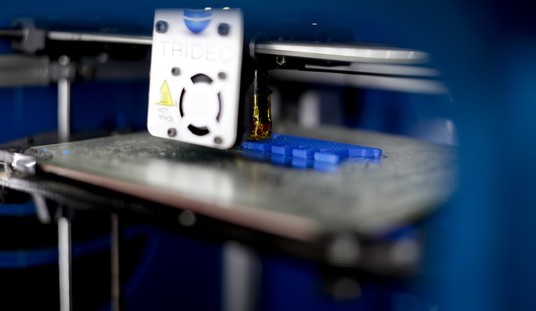While many people tracking the progress of the U.S. Army’s Modular Handgun System (MHS) contract are focused primarily on the various handguns themselves, it’s important to remember that we’re not just looking at a new handgun, but also potentially new handgun calibers.
Companies competing for the contract may submit existing calibers, or opt to create and submit new handgun calibers. The MHS Wikipedia page notes the demanding criteria that the pistol and cartridge combination must meet.
In January 2013, the Army released a Request for Information (RFI) to assess available handgun technologies and U.S. small arms industrial production capacity for the Modular Handgun System. The announcement seeks information “on potential improvements in handgun performance in the areas of accuracy and dispersion out to 50 meters, terminal performance, modularity, reliability, and durability in all environments.” The handgun should have a 90 percent or more chance of hitting in a 4-inch circle out to 50 meters consistently throughout the weapon’s lifetime. Ergonomic design should minimize recoil energies and control shot dispersion. Features include, but are not limited to, compatibility with accessory items to include tactical lights, lasers, and sound suppressors. Full ambidextrous controls are required and there is interest in ergonomic designs that can be controlled by female shooters.
There is no specific caliber, but terminal ballistics at 50 meters through 14 inches of ballistics gel will assess lethality compared to M882 9mm rounds. Specific interest is given to pistols that can accommodate higher chamber pressures over 20 percent greater than SAAMI spec for the cartridge without degradation of reliability. The RFI calls for 2,000 mean rounds between stoppages, 10,000 mean rounds between failures, and a 35,000 round service life.
The Army wants a pistol and cartridge combination that will retain match-grade accuracy for 35,000 rounds, be able to handle significant pressure spikes, have increased lethality, and be very reliable with little recoil and limited wear.
So what cartridges might best meet these criteria?
The Old Faithfuls
The 9mm NATO and .45 ACP are both military veterans with long track records of real-world military service, and both are currently being used in the U.S. military. Now freed to use hollowpoints in combat, the “smart money” play would be to assume that the military would stick with the 9mm. They have ample justification for this decision thanks to the FBI’s recent testing of modern hollowpoint bullet designs in several service-grade calibers, which saw the agency return to the 9mm.
The .45 ACP still has numerous fans in the military and a reputation for “stopping power” (based largely in folklore, not science) that could make it a serious contender. It will be interesting to see if anyone submits a .45 ACP cartridge for the contract, and if they do, if they opt for the more traditional “slow and heavy” 230 grain designs, or if they instead place their faith in the lighter and faster loads in the 165-grain to 185-grain bullet weight range that achieve velocities that better ensure hollowpoint expansion across a wider range of variables.
The Law Dogs
Many expect the .40 S&W and it’s derivative .357 SIG to make an appearance in the MHS competition, based largely upon their success in the U.S. law enforcement market. Both would clearly meet the lethality standards required, but suffer from a reputation of battering both frames, slides, and small parts, and reduced magazine capacity when compared to 9mm, and having more perceived recoil and slower follow-up shots.
The Competition Nines
Don’t laugh. There is an argument to be made for the .38 Super +P (and variants like the .38 Supercomp) and the 9×23 Winchester, cartridges that have been very popular on the competition circuit as they combine flat trajectory, good accuracy and relatively high muzzle energy. These cartridges offer .357 SIG type performance (the 9×23 exceeds it), while carrying more cartridges per magazine. The 9×23 Winchester was specifically designed to borrow the strengths of the .38 Super, while addressing its shortcomings. The 9×23 brass is much stronger and is rimless, which would seem to make it more reliable. The biggest question for these cartridges would be their reliability over time, and whether pistols chambered in these calibers would meet the 35,000 round service life required.
The PDW
FNH-USA will be submitting their Five-seveN Mk2, designed around the 5.7x28mm personal defense weapon cartridge. The 5.7×28 was specifically designed as a NATO replacement for the 9mm, and it has been adopted in various roles in both military and law enforcement units around the world. While it has a has a bright muzzle flash, recoil is light and the pistol holds 20 rounds in a standard capacity magazine.
The knock on the Five-seveN Mk2 is that it has a projected service life of 20,000 rounds, which is far less than the 35,000 round service life required by the MHS program.
The Winner?
In my opinion the 9mm NATO is still the round to beat. Millions of dollars in research have shown that high-quality hollowpoints put the 9mm on par with any service pistol cartridge on the planet in terms of lethality, while having lower felt recoil than the .45 ACP, .40 S&W, and .357 SIG, while also having significantly greater magazine capacity.
As the MHS contract is attempting to wring match-grade accuracy out of the XM17 while increasing lethality over the default M882, the competition-born 9×23 or .38 Supercomp might have an outside shot, as they can provide the same magazine capacity as the 9mm NATO, but with power exceeding that of a .357 SIG. Being great on paper, however, is different than being great in the field, and these cartridges are going to have to signficantly outperform the other contenders to overpower institutional biases.








Join the conversation as a VIP Member